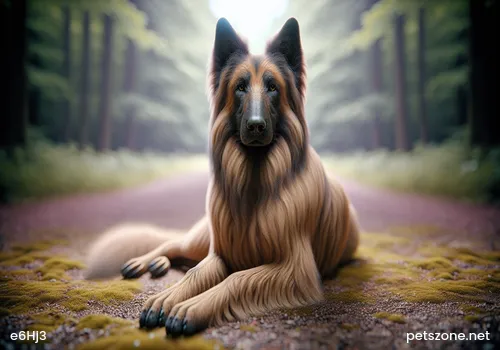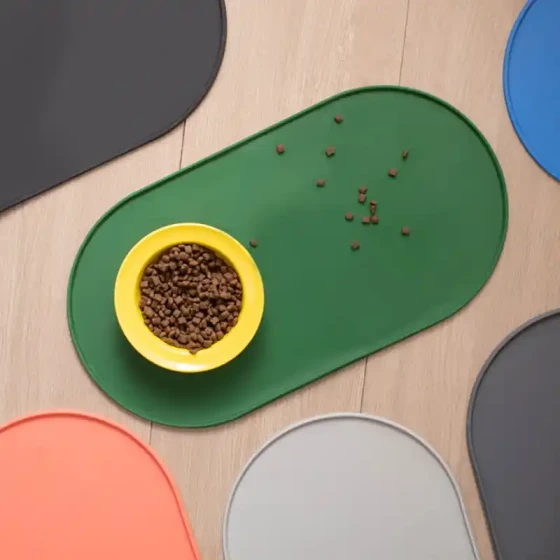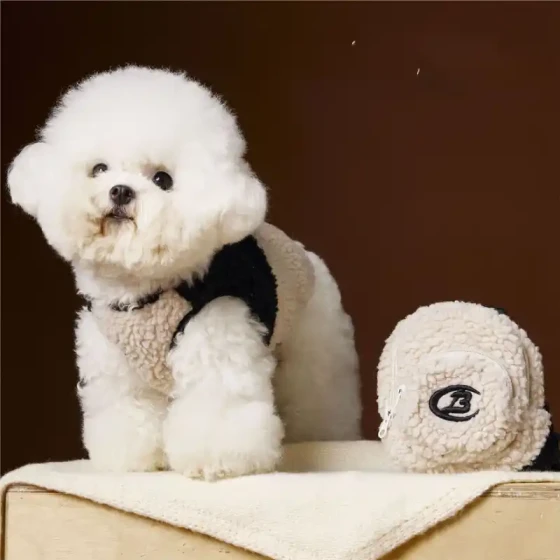British English Springer Spaniel Breed Introduction

Chinese Name: British English Springer Spaniel
English Name: EnglishSpringSpaniel
Abbreviation: Springer Spaniel
Type: Medium-sized dog
Category: Gun dog, Companion dog
Shoulder Height: 46 to 48 cm
Weight: 16-20 kg
Breed Standard:
Overall Appearance
The English Springer Spaniel is a medium-sized sporting dog, compact and solid-bodied, with a docked tail. The coat is moderate, with feathering on the limbs, ears, and chest. The ears hang down, and the relaxed, gentle expression combined with a sturdy body and friendly wagging tail show it truly belongs to the ancient hunting dog family. Its body is very symmetrical but not excessive; all parts are well proportioned. Its bearing is elegant and notable, with a deep torso, strong and muscular legs, and legs long enough to allow effortless movement. Overall, the English Springer Spaniel should demonstrate strength, endurance, and liveliness. It should present a build suitable for running and endurance, capable of sustained work under tough hunting conditions. At its best, it is stylish, proportionate, balanced, and enthusiastic, combining beauty with practicality, being a genuine hunting dog capable of distinguishing prey.
Size, Proportion, and Structure
The physique is agile, capable of working at reasonable speeds on rough terrain. Its structure reflects endurance. Medium size. The ideal shoulder height for males is 50.8 cm; for females, 48.3 cm. A deviation from the ideal by more than 2.5 cm is a fault. A male with a 50.8 cm shoulder height, proportionate and in good condition, weighs about 22.85 kg; a female with a shoulder height of 48.3 cm weighs about 18.14 kg. The body length (measured from shoulder to croup) is slightly greater than the shoulder height. A body that is too long, especially in the loin, easily tires and lacks the compact silhouette characteristics of this breed. Short legs affect symmetry and restrict gait, which is undesirable. Bone structure is good, showing solid connections, well-developed bones that are strong but not coarse or heavy.
Head
The head is impressive, beautiful due to a combination of strength and elegance but not heavy. The size of the head and its proportion to other body parts are important. Viewed from the side, the head is about as long as the neck and essentially connects with the torso. The stop, eyebrows, and prominent bone structure around the eye sockets form the dog’s beauty and expression, appearing alert, gentle, and convincing. The eyes are central to the dog’s attractive nature. Proper size, shape, positioning, and color of the eyes affect its expression and appeal. The eye openings are moderate sized, oval-shaped, well-separated, and set deep in the sockets. The iris color matches the coat color: deep brown for liver and white dogs, black or dark brown for black and white dogs; the eyes’ edges are heavily pigmented and correspond with the coat color. The eyelids are tight with a small hollow, and the third eyelid is not prominent. Small, round eyes, protruding eyes, or individuals with yellow or brass-colored eyes are highly undesirable. The ears are long and wide, hanging close to the cheeks with no tendency to stand or flare out. The ear leather is thin and reaches about the nose tip. The ear roots align with the eyes and are not set far back on the skull. The skull is long, broad, with a flat top, slightly rounded sides and back. The occiput is not prominent. Because the skull extends from the face, the stop is separated by a groove between the eyes, vanishing in the middle of the forehead. The stop is developed and moderate, appearing as a slight convex connection between the muzzle and the upper part of the head. The grooves and eyebrow shapes are evolved features. The muzzle is approximately equal in length to the skull and about 1.5 times as wide as the skull. In side view, the top line of the skull and muzzle run parallel to the ground. The nasal bone is straight, with no downward slope toward the nose tip, which would cause an undesirable sunken facial appearance. The nasal bone is neither concave like a “dish face” nor convex like a Roman nose. The cheeks are square, clearly contoured under the eyes. The jaws are long enough, square, slanting, and strong, enabling easy hunting; the upper lip fully covers the lower jaw line but does not droop or exaggerate. The nose is fully pigmented, liver or black depending on the coat. The nostrils are wide and open. Teeth are hard, neat, moderate in size, with a scissor bite. A level bite or 1 to 2 incisors slightly protruding beyond the bite line are minor faults. Misaligned or twisted bites are major faults and severely penalized.
Neck, Topline, and Body
The neck is moderately long, strong, neat, and arches slightly with the head held high, smoothly merging with the angled shoulders. The topline from shoulder to tail is firm and slightly sloping. The body is strong, compact, with short ribs and joints. The chest is deep, aligned with the elbows, and the forechest is very developed but does not interfere with forelimb movement. The ribs are long, continuously extending to mid-body, tapering gradually toward the rib ends. The underline aligns with the elbows and has a slight upward curve on the sides of the abdomen. The back is straight, strong, and level. The loin is short, strong, and slightly arched. The croup is elegantly rounded, smoothly connecting with the hind legs. The croup slopes gently toward the tail base, which naturally drops along the rump. The tail is horizontal or slightly raised, expressing the dog’s lively nature and joyful action in hunting. A tightly clamped tail, indicating timidity and unreliability, is a fault. Like the tail docked dogs, the tail forms an appropriate angle with the topline.
Forequarters
Efficient motion of the forelegs requires coordinated forequarters. The shoulder blade is flat, closely joined at the edges, smoothly blending with the body contour. From the top of the shoulder blade to its end and to the elbow, both bone segments are visibly equal in length, forming about a 90° angle; this positions the forelegs well beneath the torso with elbows just below the top of the shoulder blade. The elbows are close to the body. The forelegs are straight, connecting at a right angle with the feet. Bone is strong, slightly flat, neither too round nor heavy. The pastern is short, strong, slightly sloped, and does not show weakness. Dewclaws are usually removed. Feet are round or slightly oval. Feet are compact, well-arched, medium-sized, with thick pads and feathering between the toes.
Hindquarters
In work and shows, the English Springer Spaniel’s rump and thighs should be solid, strong, and well-developed. The entire hindquarters display strength and driving power. Thighs are wide and strong, with robust stifle joints. To achieve efficient hunting, the angles of the hind leg joints and hocks never exceed or fall short of those of the forelegs. The hocks are slightly rounded, appearing neither small nor prominent. The hind pastern (about one-third the distance from the hip joint to the foot) is strong with good bone quality. Viewed from behind, the hind pasterns are parallel. Dewclaws are usually removed. Except being smaller and tighter, the feet are otherwise like the forefeet.
Coat
The English Springer Spaniel has an outer coat and undercoat. On the body, the outer coat is medium length, flat or wavy, easily distinguishable from the undercoat, which is short, soft, and dense. The amount of undercoat varies with climate and season. The outer and undercoats of heterozygous dogs are waterproof and resistant to weather and harsh conditions. The ears, chest, legs, and abdomen are covered with medium-length and thickness hair. The head, front of forelegs, front of hind legs, and under the hocks have short, fine hair. The coat is neat and shiny. Trimming the hair on the head, ears, neck, and feet to remove decayed undercoat and to enhance the appearance per the standard by thinning and shortening excessive hair is required. The tail may be trimmed or left with wavy hair. First and foremost, the appearance must be natural. Excessive coat disrupts the clean silhouette, but over-trimming, especially trimming the body coat or hanging hair on cheeks, is penalized in dog shows. The texture and condition of the coat are more important than the quantity of coat.
Color
The following color combinations and markings are acceptable: (1) Black or liver with white markings or white base with black or liver markings; (2) Blue or liver roan; (3) Tricolor: black, white or liver, white with tan markings, often appearing on eyebrows, cheeks, inside ears, and under the tail. Any white areas on the coat may have ticking spots. Colors such as lemon, red, or orange are not accepted.
Gait
Balance is a prerequisite for good movement. The front and rear body angles and robust development must be equal to ensure a smooth, effortless gait. Good shoulder angles for wide stride and strong hindquarters for power are equally important. Viewed from the side, the dog exhibits a long body, squared stride for searching, and a strong back with no tendency to sink. From side to side, the backline at the loin rises slowly and is slightly rounded. From the front, the legs move freely forward. The elbows are not restricted by the shoulders, and leg movement is unhindered. From the rear, the hind legs support the body well, aligned with the forelegs. As speed increases, the hind legs naturally converge toward the centerline of movement. Gait faults include high steps that consume energy; walking with a sway; irritability; or movement relying mainly on foot action causing body rolling or swaying.
Temperament
The English Springer Spaniel’s typical temperament is friendly, eager to please, easily trained, and willing to obey. These traits make it docile, which is important for hunters to control during hunts. In dog shows, it is also docile and natural, accepting judges’ examination without resistance. Boldness toward people or other dogs does not demonstrate the sporting character and purpose and is unacceptable. Puppies and novices that show excessive shyness in shows are also penalized.
Summary
The main focus in judging the English Springer Spaniel is its overall condition. It must display its type, including overall appearance and silhouette; as well as soundness, including movement and temperament. A steady, effortless gait requires a healthy, well-balanced body. Although the standard sets high demands, it does not intend to forgo the typical English Springer Spaniel appearance. Dogs with legs too long or too short, or with odd heads or expressions, though moving well, are less favored than those with better appearance but minor gait faults. It is noteworthy that the English Springer Spaniel was originally a sporting dog in the hunting dog family; its appearance, behavior, and movement must reflect its hunting dog characteristics.
-560x560.webp)


